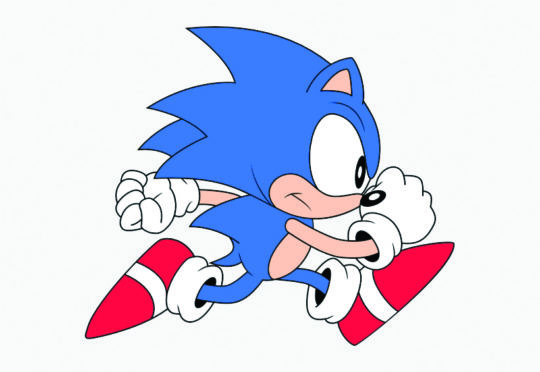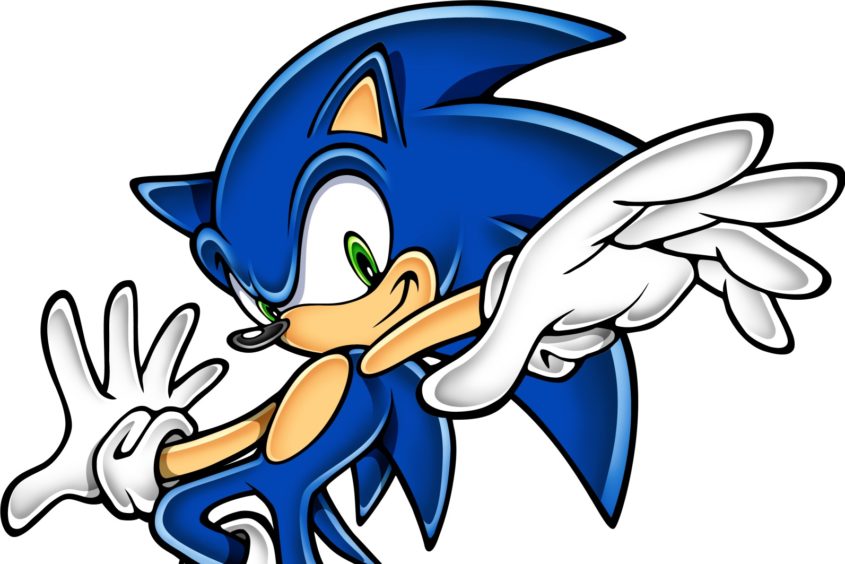
Time doesn’t so much fly as roll up in a ball and spin furiously. This week marks the 30th anniversary of the debut appearance of Sonic the Hedgehog.
Here, Tom Campbell, host of a podcast charting the character’s history and impact, tells Ross Crae the Honest Truth about the lightning-fast videogame hero.
What are Sonic’s origins?
Back in the early 90s, SEGA were looking for a video game mascot to rival Super Mario on the Nintendo because, frankly, they were wiping the floor with them in terms of sales.
There was an internal competition at SEGA to find a new character. Suggestions included a rabbit, an armadillo, a dog and, according to the notes, “an old man with a moustache.” The hedgehog jumped out as the most distinctive though.
Why did the designers choose a hedgehog?
It came down to how they wanted the game to run. Mario games were quite slow so they wanted to make a game that was the opposite.
SEGA wanted a character that would be incredibly fast, one that could defeat enemies with a somersault attack and crash through walls with ease.
The team decided that a hedgehog would be the best choice as, with the spikes, it was not only the toughest but the coolest looking too!
How important was Sonic for SEGA?
Oh, incredibly! It’s no exaggeration to say that Sonic tipped the balance in SEGA’s favour in the video game war against Nintendo.
Sonic The Hedgehog began very quickly out-selling Super Mario in the early 90s.
Without Sonic, the video game landscape would be very different today.
Why do you think this little blue hedgehog has captured people’s imagination so much?
The 90s was very “cool” as a decade and Sonic was very much in the zeitgeist. He was a brash, arrogant lead character that people gravitated to for being unconventional.
Sonic games have a special energy to them as well. They hit at a time where platform video games were quite slow and involved meticulous planning. The freedom to just barrel through levels at a hundred miles an hour was incredibly liberating.
The core of all the Sonic games have been “run at top speed from left to right, look out for the robots, good luck!” They’re easy games to throw yourself into.
How has the design and gameplay of Sonic’s adventures developed over the years?
Sonic made the jump from 2D (left to right) to 3D (all over the place) in the late 90s and with that came deeper character development and more story-telling.
A lot of Sonic games offer more than just the speed-run element these days and, whilst it’s great to diversify into shoot-em-up style games and treasure hunting mini-games, the focus has stayed the same – you play a blue hedgehog that’s really flippin’ fast!
It was cool in Sonic Adventure for the Dreamcast in 1998 to finally hear a voice for Sonic, and Ryan Drummond gave him a sound that I thought was spot on!
What do you think is coming in the future for Sonic?
This year is Sonic’s 30th anniversary and there’s a lot of tie-ins with other video games and media platforms to celebrate it.
We also know a Netflix series is in the works for next year and this past week a brand new videogame has been teased. It’s going to be an exciting year for Sonic fans!
Other than in video games, where else has Sonic appeared?
The Sonic movie was released last year just before Covid took our cinemas away. It was great to see people, like myself, who had grown up with Sonic The Hedgehog introducing him to a new generation of fans.
The sequel has begun production and I’m looking forward to embracing my inner-manchild and watching it! For research purposes, obviously.
 What are your personal memories of Sonic, and what inspired your podcast series charting his history?
What are your personal memories of Sonic, and what inspired your podcast series charting his history?
I LOVED playing Sonic as a kid. I remember the day I got a SEGA Master System for Christmas with Sonic The Hedgehog and that iconic day me, my brothers and my mum and dad drove to Toys R Us to get a SEGA Megadrive and Sonic The Hedgehog 2.
I was an avid collector of Sonic The Comic and the shop at the top of the road from where I lived would keep me a copy every fortnight.
Also I was up early on a weekend to watch the different versions of the cartoons they’d show on Channel 4!
I was asked by YouTube channel Triple Jump to present a video about Sonic The Hedgehog and I thought, since we’ve all got nowhere to go and I’ve got a lot of free time on my hands, I’d love to channel my creativity and celebrate my love of the Sonic franchise with a podcast!
What’s the most interesting fact about Sonic you discovered in your research?
The podcast goes beyond the video games and delves into the cartoon series and the comic book adaptations from around the world. I had the chance to speak to some amazing people involved such as Jim Cummings (the voice of Winnie The Pooh and Dr. Robotnik in the cartoon) Nigel Kitching (the writer of Sonic The Comic) and a guy called Ken Penders who was the writer of the Sonic comic books in America.
Ken famously sued the comic book company when he was let go claiming that the characters he’d created for the comic book were his intellectual property. He was hated within the community for decades because of this but it was fascinating to get his side of the story for the first time ever and realise that it wasn’t as black and white as it was made out to be.
There’s loads of mind-blowing facts about the development of the games, the tantrums and the chaos, loaded into the Podcast for you to enjoy!
A History of Sonic the Hedgehog podcast is available on Apple Podcasts and Spotify. Tom also presents on the YouTube channel Cultaholic.

Enjoy the convenience of having The Sunday Post delivered as a digital ePaper straight to your smartphone, tablet or computer.
Subscribe for only £5.49 a month and enjoy all the benefits of the printed paper as a digital replica.
Subscribe